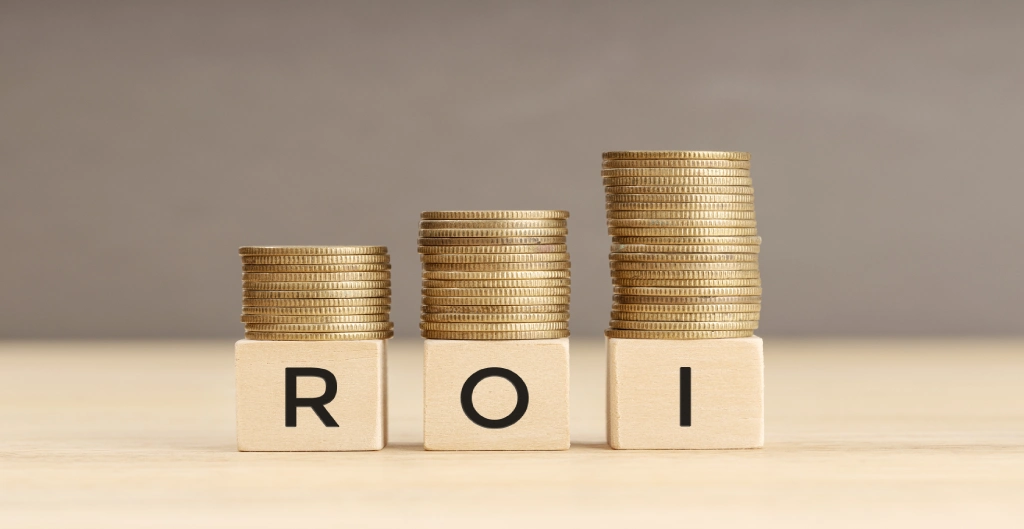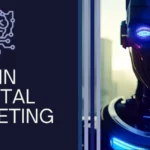
Maximizing Marketing Automation ROI
A Game-Changer for Business Growth
Marketing automation is a powerful tool for businesses looking to improve efficiency, boost sales, and enhance customer relationships. But how do you measure its impact? Understanding marketing automation ROI is the key to ensuring your automation strategies are driving success. In this blog, we’ll break down what marketing automation ROI is, why it matters, and how you can maximize it for your business.
What Is Marketing Automation ROI?
ROI (Return on Investment) measures the effectiveness of a marketing campaign, and marketing automation ROI specifically evaluates how much value your business gains from automation solutions. It helps businesses understand whether their investment in automation software, email campaigns, and customer engagement strategies is paying off.
How to Calculate Marketing Automation ROI
To determine your marketing automation ROI, use this formula: ROI = (Revenue Generated – Cost of Automation) / Cost of Automation × 100
For example, if you spend $5,000 on marketing automation and generate $20,000 in revenue, your marketing automation ROI would be: ($20,000 – $5,000) / $5,000 × 100 = 300% ROI
A high ROI means your automation efforts are working, while a low ROI signals a need for improvement.
Why Marketing Automation ROI Matters
Investing in automation is not just about saving time—it’s about increasing revenue and improving efficiency. Businesses that track marketing automation ROI can:
- Identify successful campaigns and scale them.
- Reduce wasted spending on ineffective strategies.
- Improve engagement with targeted messaging.
- Increase sales through streamlined workflows.
- Optimize lead development for sustainable growth.
Without measuring automation ROI, businesses risk spending money on ineffective strategies and missing opportunities for better performance.
Personalization vs. Automation: Striking the Right Balance
The Challenge of Over-Automation
Businesses often struggle to balance automation with human-like personalization. Over-automation can make marketing feel robotic, while too much personalization can slow down efficiency. A well-balanced approach ensures efficiency without losing the human touch.
Best Practices for a Balanced Approach
- Segment Audiences Effectively – Create automation workflows based on customer behavior.
- Use AI for Predictive Personalization – AI-driven tools can suggest relevant content while maintaining efficiency.
- Allow Human Intervention in Key Interactions – Use automation for routine tasks but include human touchpoints in customer interactions.
- Leverage Omnichannel Communication – Ensuring a seamless customer experience across email, chat, and social media helps maintain personalization without manual intervention.
Key Factors That Affect Marketing Automation ROI
Several factors influence your marketing automation ROI. Understanding them will help you optimize your strategy and maximize your return.
- Lead Quality & Targeting
Effective automation depends on attracting high-quality leads. Ensure your strategies focus on data-driven targeting to reach potential customers with high conversion potential. - Personalized User Interaction
Consumers respond better to tailored experiences. Automating segmentation and personalized messaging helps nurture leads and improve engagement. - Sales Funnel Optimization
A seamless transition from prospect to customer is key to a strong marketing automation ROI. Automation should enhance this journey, ensuring efficiency at every step. - Integration with CRM & Analytics
Automation solutions should integrate with CRM systems, analytics tools, and marketing platforms to track and improve performance. - Tracking Performance Metrics
Regular monitoring helps optimize campaigns for better outcomes. A data-driven approach ensures marketing automation ROI is continuously improving.
Social Media Automation and Its Impact on ROI
Why Automate Social Media?
Automating social media scheduling and engagement allows businesses to maintain a consistent online presence without manual effort. A well-planned automation strategy ensures content is distributed at optimal times while maintaining real-time interactions where needed.
Best Practices for Social Media Automation
- Schedule Posts at Peak Engagement Times – Analyze audience activity to maximize reach.
- Automate Responses Without Losing Authenticity – Use AI chatbots to answer common inquiries but allow human interaction for complex issues.
- Monitor Analytics to Adjust Strategies – Track post-performance and engagement rates.
- Diversify Content Formats – Combining static posts, reels, and live content helps balance automation with organic engagement.
Behavioral Triggers in Marketing Automation
Why They Matter
Behavioral triggers allow businesses to send automated messages based on customer actions (e.g., cart abandonment, email opens, website visits). This improves conversion rates and enhances marketing automation ROI.
How to Use Them Effectively
- Abandoned cart emails to recover lost sales.
- Retargeting ads to bring back potential customers.
- Follow-up emails triggered by customer interaction levels.
- Event-based triggers that personalize messaging for each user journey.
Using these triggers strategically ensures marketing automation ROI remains high by delivering personalized, timely interactions.
The Importance of A/B Testing in Marketing Automation
What is A/B Testing?
A/B testing involves comparing two versions of an email, ad, or webpage to determine which performs better. The insights from these tests help fine-tune automated campaigns for higher performance.
What Should Be Tested?
- Subject Lines – Optimize email open rates.
- Call-to-Action (CTA) Placement – Improve click-through rates.
- Landing Page Layouts – Increase conversion rates.
- Email Send Times – Optimize engagement rates.
Best Practices for Effective A/B Testing
- Test one variable at a time.
- Run tests for a statistically significant period.
- Use automation tools to track and implement successful changes.
- Apply test results across different campaign types.
Future Trends in Marketing Automation
Emerging Innovations
- AI-powered automation for real-time customer interactions.
- Chatbots & voice search optimization for instant engagement.
- Hyper-personalization using predictive analytics.
- Automation-driven influencer marketing to expand brand reach.
- Advanced machine learning algorithms to enhance lead scoring.
Adopting these trends will ensure businesses stay competitive and continuously enhance marketing automation ROI.
Real-World Success Stories
Case Study 1: E-Commerce Business Boosting Sales
An online retailer used email automation for cart abandonment recovery, increasing their conversion rate by 20% and achieving a 250% ROI boost.
Case Study 2: SaaS Company Enhancing Lead Conversion
A SaaS company optimized its lead nurturing with automation, resulting in a 30% increase in conversions and a 300% improvement in ROI.
Case Study 3: Small Business Strengthening Customer Retention
A small business automated customer follow-ups and loyalty programs, leading to a 40% rise in repeat purchases and long-term profitability.
How Dream Buildr Helps with Marketing Automation ROI
Dream Buildr provides automation solutions that streamline workflows, nurture leads, and enhance engagement, ensuring higher marketing automation ROI.
Boost your Marketing Automation ROI with Dream Buildr! Visit Dream Buildr today and follow us on Facebook for expert insights.
Final Thoughts- Is Marketing Automation Worth It?
Absolutely! A well-executed automation strategy delivers efficiency, increased sales, and stronger customer engagement. By tracking and optimizing marketing automation ROI, businesses can unlock greater success.
Ready to enhance your marketing automation? Visit Dream Buildr and follow us on Facebook for expert tips!
Frequently Asked Questions (FAQs)
1. What industries benefit the most from marketing automation?
Marketing automation can benefit a wide range of industries, including e-commerce, SaaS, real estate, healthcare, financial services, and B2B enterprises. Any industry that relies on lead generation, customer retention, and personalized communication can leverage automation for better efficiency and revenue growth.
2. How long does it take to see results from marketing automation?
The timeframe to see results depends on various factors, such as the complexity of the automation setup, the quality of the data, and the industry. Typically, businesses start noticing improvements in engagement and efficiency within a few months, while significant ROI can take six months to a year.
3. Can small businesses benefit from marketing automation?
Yes! Marketing automation is not just for large enterprises. Small businesses can use automation to streamline email marketing, lead nurturing, social media scheduling, and customer relationship management (CRM). Many automation tools offer scalable plans suited for small businesses.
4. What are the most common mistakes businesses make when implementing marketing automation?
Some common mistakes include over-automation (leading to impersonal interactions), lack of clear objectives, poor integration with existing CRM systems, failure to monitor and adjust campaigns, and not segmenting audiences effectively.
5. How do I choose the right marketing automation platform for my business?
Choosing the right platform depends on your business size, goals, and budget. Consider factors such as ease of use, integration capabilities, analytics features, scalability, customer support, and pricing before making a decision.
6. Does marketing automation replace human involvement in marketing?
No, marketing automation enhances human efforts rather than replacing them. While automation handles repetitive tasks, human oversight is essential for strategy, content creation, personalization, and interpreting campaign insights.
7. How can businesses measure the success of their marketing automation campaigns?
Success can be measured using key performance indicators (KPIs) such as conversion rates, email open rates, engagement metrics, customer retention rates, and ROI calculations. Regular analysis of these metrics helps optimize automation strategies.












